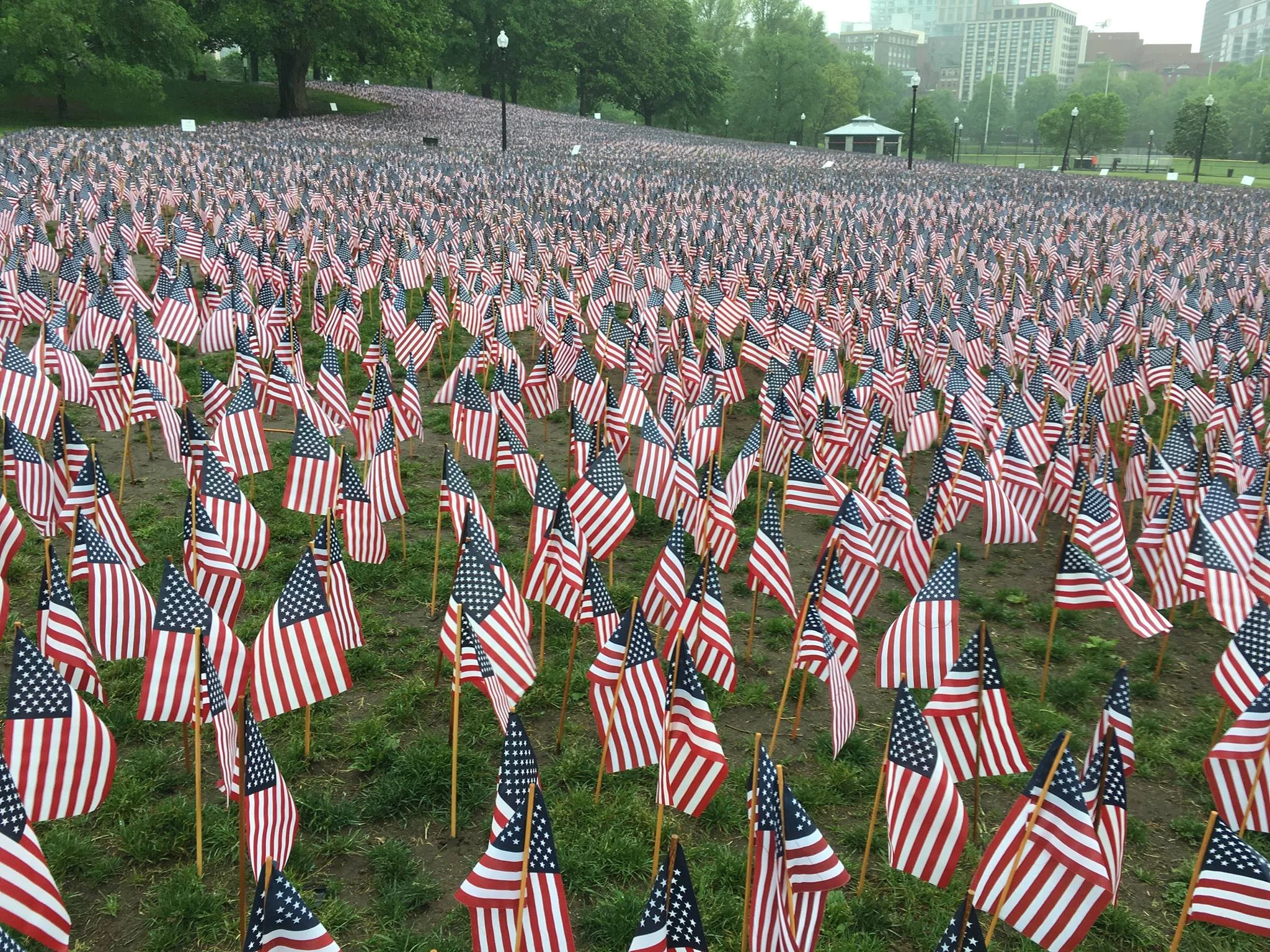Not All Wounds are Visible
with Grandpa at the WWII Memorial
In 2005 I was sitting on a bench near the WWII Memorial in Washington DC with my grandfather and was a firsthand witness to his humbleness. We were in town with several other family members to honor him and others for their efforts of the war. He served ten years as a member of the US Navy. While on board of the USS Lexington, he was the helmsman when it went searching for the missing Amelia Earhart. Rising to the rank of Chief Motor Mechanist’s Mate, he was instrumental while on the submarine USS Nautilus during the Battle of Midway. As he and I were enjoying a rest while others were visiting nearby memorials, tourists would approach him, asking to shake his hand and offer their thanks. Many would say, “Thank you for your service. You are a hero.” Time after time, his response, was, “I’m no hero. The heroes are at the bottom on the sea.”
Inscribed at the Korean War Veterans Memorial, Freedom Is Not Free.
As we begin the unofficial start to summer, Memorial Day is a time to honor and mourn those who have died while serving our country. Somber reminders of the fallen include 37,000+ flags planted on the Boston Common to represent the brave Massachusetts service members who gave their life defending our country since the Revolutionary War. At Arlington National Cemetery, the Tomb of the Unknown Soldier is guarded 24/7, 365 and all the other tombstones aligned as if in formation.
I also think it is important to recognize all service members who experience trauma in all forms because not all wounds are visible. In addition to psychological distress such as PTSD, service members may also experience increased distress with sleep, anxiety, mood, and addictive behaviors.
The following statistics come from the 2022 National Veteran Suicide Report
There were 343 fewer Veterans who died from suicide in 2020 than in 2019, and 2020 had the lowest number of Veteran suicides since 2006.
From 2001 through 2018, the number of Veteran suicides increased on average by 47 deaths per year. From 2019 to 2020, there were consecutive reductions, of 307 and 343 suicides, respectively, an unprecedented decrease since 2001.
From 2018 to 2020, adjusted rates for Veterans fell by 9.7%. By comparison, the adjusted rate for non-Veteran U.S. adults fell by 5.5%.
The age-adjusted suicide rate for women Veterans in 2020 was the lowest since 2013, and the age-adjusted suicide rate for Veteran men was the lowest since 2016.
From 2019 to 2020, among Veteran men, the age-adjusted suicide rate fell by 0.7%, and among Veteran women, the age-adjusted suicide rate fell by 14.1%. Among non-Veteran U.S. men, the age-adjusted rate fell by 2.1%, and among non-Veteran women, the age-adjusted rate fell by 8.4%.
Assessment of Veteran suicide rates by race showed decreases from 2019 to 2020 for all groups.
Despite the 24.6% decrease in the Veteran population from 2001 to 2020, the number of Veterans with VHA health care encounters in the year or prior year rose 55.0%, from 3.8 million to 5.9 million.
Despite onset of the COVID-19 pandemic in 2020, age and sex-adjusted suicide rates among Veterans fell 4.8% from 2019 to 2020, versus a 3.6% decline among non-Veteran U.S. adults.
Maintaining a strong body and mind can help reduce the risk of mental health disorders from escalating. A few include:
Daily-ish exercise such as going for walks, strength training with weights or incorporating a yoga practice.
Stay well hydrated and practice good sleep hygiene.
Take time when reconnecting with friends and family when returning from deployment.
If feeling frustrated or isolated, reach out to a healthcare professional.
Reach out to other veterans or veteran groups, create social supports or seek out spiritual/religious advisors when feeling the need to connect with others.
May we all find ways to honor and support our loved ones on this Memorial Day.

